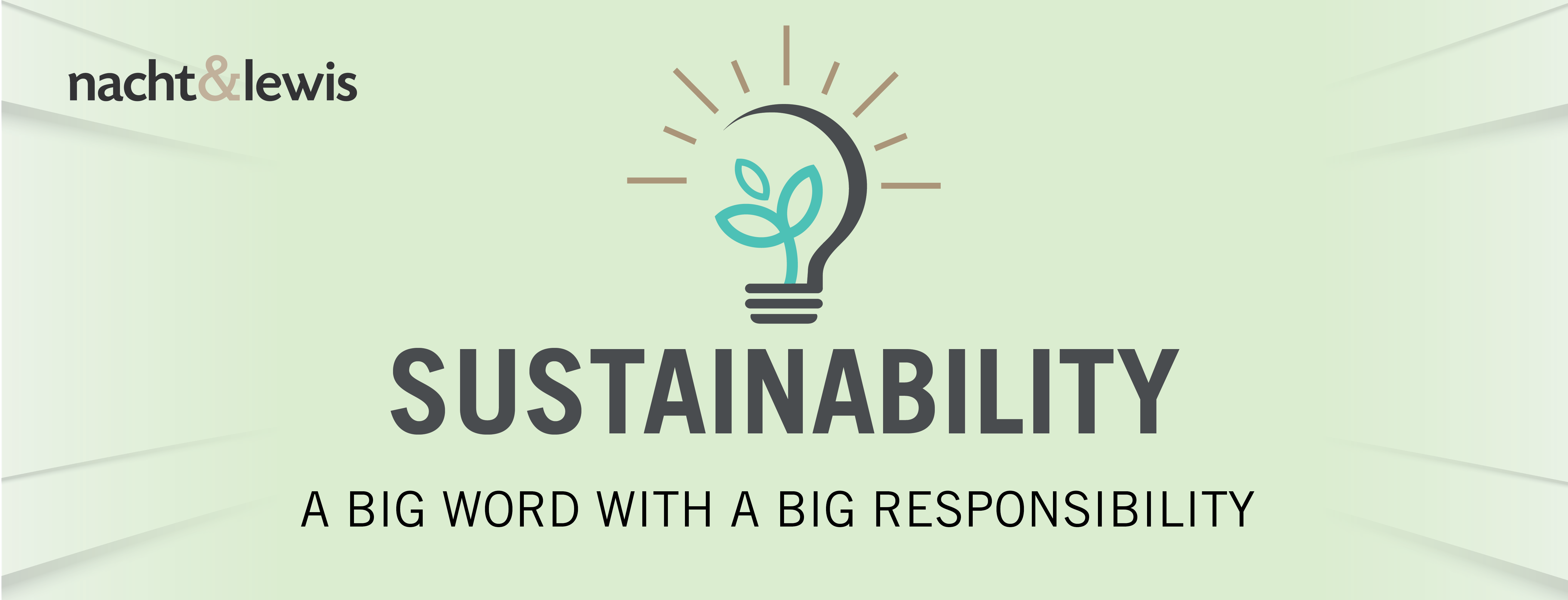Sustainability has become an important topic over the last decade, and rightfully so. It is becoming an integral part of how we approach the design and development of buildings. Whether through construction or operations, the built environment is responsible for 40% of annual global CO2 emissions. As architects, we have a unique opportunity to impact local and global climate goals through careful design and thoughtful selection of materials and systems. This requires us to go beyond code-required minimums and local governmental mandates wherever possible to ensure sustainability remains a priority in every decision. Nacht & Lewis recognizes our role and we are committed to being part of the solution.
At Nacht & Lewis, we are beginning to utilize more tools in the early stages of the design process to determine the impact of our designs on energy consumption. We work with daylighting analysis tools and our BIM models to monitor the amount of light that enters a space. This not only improves the general well-being of the building occupants, but also decreases the usage of artificial lighting during the day. We can employ similar tools to identify and limit hot spots on a building, where high efficiency glazing or reduced glazing might be used to decrease solar heat gain and, as a result, lower the energy required for cooling the building.
In addition to altering our design based on real results from our internal analysis to create a better built environment, we are also committed to continually learning what makes the biggest sustainable impact in our designs. The most current codes and mandates cover reducing operational carbon emissions and using on-site renewable sources to generate energy, which is essential. However, the next sustainability focus is on reducing embodied carbon, which is just as critical to reduce as operational carbon but is not yet subject to code requirements or governmental mandates. Tools like Kaleidoscope and Tally are currently being developed to help users compare and communicate the carbon impact of each material used in a building.
Although our new buildings operate more efficiently than existing buildings, they output a lot of embodied carbon when constructed (5.5-8% of total annual U.S. energy consumption is from building products and construction according to Architecture 2030). If we can find ways to salvage old structures and improve their operation carbon output, we can reduce the overall carbon impact on the environment. Three-fourths of the buildings existing in 2040 will be buildings that exist today. Decarbonization through the reuse and improvement of existing buildings offers the double benefit of improving operational impacts and reducing some of the need for higher carbon intensive materials like steel and concrete.
Nacht and Lewis understands that our clients have numerous important goals for their new and renovated buildings. While sustainability is a priority for most, it can sometimes take a back seat to more immediate concerns. Often, goals get pushed aside because there is a perception that short-term costs will outweigh long-term needs. Therefore, it is crucial that our clients have access to data that allows them to compare immediate costs with the long-term impacts of their decisions. While life-cycle operating cost impacts are relatively easy to understand, abstract concepts such as a ton of carbon emitted into the atmosphere can be challenging to relate to. Last year, the federal government proposed valuing a ton of carbon at $51, which is relatable, but is it accurate? According to a recent article published by the Brookings Institution, the EPA has now proposed that the cost to society of a ton of carbon is $190. Depending on how much one values the future in the calculation, that number could be as high as $340. With these number established it will be easier to show the concrete impacts of our design choices. These impacts will be more profound and personal for those affected by increased wildfires, floods, mudslides, extreme heat events, and sea-level rise. These dangers are significant for almost all our clients in California.
As architects, we hold a huge responsibility as the designers and coordinators of the built environment. It is our duty to specify responsible materials, design for environmental conditions, and use new technologies to aid in designing efficient systems that will make a positive impact on climate change and our client’s future cost. Sharing our sustainable expertise and passion can make an even bigger difference when we can inspire and influence building owners and operators to prioritize sustainability in their projects.
Written by: Julie Bettencourt, Elizabeth Hawks McBride, and Mike Smith
References:
https://architecture2030.org/why-the-building-sector/#:~:text=The%20built%20environment%20generates%2040,for%20an%20additional%2013%25%20annually.
https://www.brookings.edu/2023/03/14/what-is-the-social-cost-of-carbon/#:~:text=An%20SCC%20of%20%2451%20means,to%20equal%20%2451%20a%20ton.




